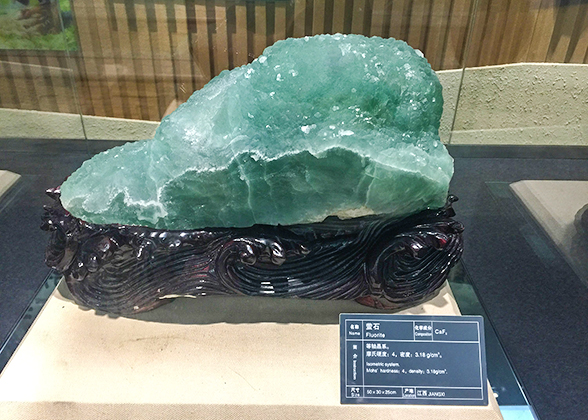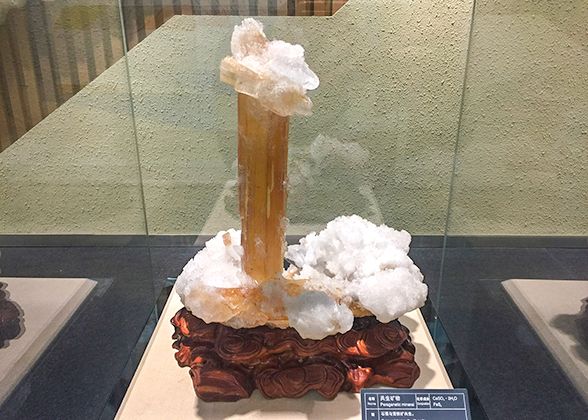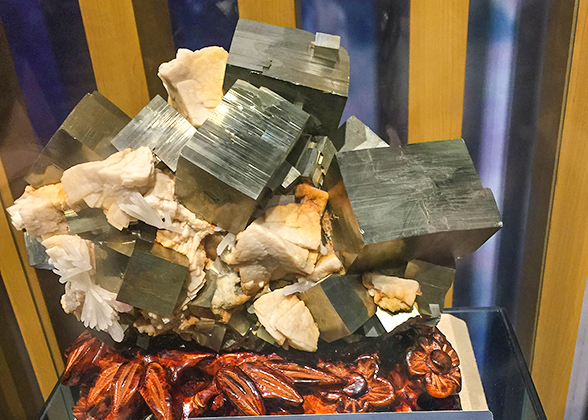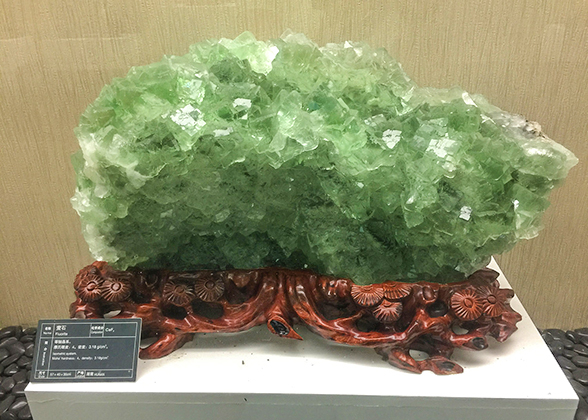The Geological Museum of China
The Geological Museum of China is located on Fuchengmen Inner Street in Xicheng District, northwest of the center of Beijing. First opened in 1916, it is one of Asia's leading geological museums. It has a worldwide reputation for its exquisite exhibits with more than 200,000 geological specimens over a floor area of 13,000 square yards (11,000 square meters). The museum covers all fields of earth science. Among the exhibits, fossils of dinosaurs such as Shantungosaurus giganteus and Sinosauropteryx catch visitors' eyes. World-famous ancient human fossils from the Peking Man Site at Zhoukoudian are regarded as a national treasure. Mineral rocks and rare gemstones also attract visitors to the Geological Museum of China.
Layout
1F: Earth Hall, Souvenir Shop
2F: Mineral Rock Hall, Gemstone Hall
3F: Prehistoric Creatures Hall, Temporary Exhibition
4F: Land and Resources Hall, Temporary Exhibition
Earth Hall
There is an auto-revolving model of the earth. It helps visitors get a better understanding of earth's rotational effects. This hall contains many models such as glacial landforms. These models show that how the evolutions of different landforms are influenced by endogenous and external forces. Visitors can witness the change of topography directly. Moreover, this hall has advanced current satellite imagery. In this way, people can see real and vivid mountains, valleys, lakes and oceans on the earth.
|
|
Mineral Rock Hall
|
|
Gemstone Hall
The First group: diamonds, rubies and sapphires.
The Second group: beryls, chrysoberyls and garnets.
The Third group: tourmalines, olivines, topazes, spinels and zircons.
The Fourth group: pyroxenes, feldspars, apatites, scapolites and rare gemstones.
The Fifth group: crystal (amethysts, citrines, cairngorms and rose quartz).
The exhibits on the north side mainly show jades, such as jadeites, calaites and malachites.
Prehistoric Creatures Hall
This hall is divided into two areas. The first small area includes a wall exhibition of fossils, multimedia exhibitions and some brief and basic introductions to fossils. Visitors can inquire into the biological classifications using the multimedia equipment. The second, larger area is divided into 8 units which describe evolutionary history.
| Unit 1 : Earliest Lives | Unit 5: Origins of Amphibians |
| Unit 2: Cambrian Explosion | Unit 6: Mass Extinction |
| Unit 3: Marine Invertebrates | Unit 7: Dinosaur-Bird Period |
| Unit 4: Origins of Vertebrates | Unit 8: Mammals’ Period |
Among these 8 units, Cambrian Explosion, Mass Extinction, Dinosaur-Bird Period and Mammals' Period are the most popular units. In the south passageway, there are models of some ichthyosaurs, anchisaurus and pterosaurs. Ichthyosaurs, gigantic amphibious reptiles, first appeared around 250 million years ago. Their evolutionary processes were similar to those leading to dolphins and whales. During Jurassic period, ichthyosaurs thrived and multiplied until extinguished in the Cretaceous Period. Fossils of anchisaurus were discovered in 1818. However, it wasn't until 1885, that scientists realized this creature could be classified as a dinosaur. Phytophagous anchisaurus is regarded as the most beautiful dinosaur in the world. They have a nearly triangular head and a flexible body. Although they have long and pointed mouths, they only eat leaves. A pterosaur is a class of flying reptiles, which lived during the Triassic and Cretaceous periods. The sizes of species of pterosaurs vary substantially. There are some forest pterosaurs which are just like birds.
Visitors are always willing to stop by a 16 feet (5 meters) long authentic ichthyosaur fossil. It is worth mentioning that it is the best-preserved in the world. The Mammal's Period exhibition contains ancient human fossils from the Peking Man Site at Zhoukoudian. These fossils can be dated back to 25,000 years ago. From 1921 to 1927, archaeologists undertook three excavations and discovered three ancient human fossil teeth. In 1929, the skull of Peking Man was discovered. In addition, the discovery of artificial tools and marks from the use of fire were the most significant archaeological findings.
Besides the above permanent exhibitions, there are also some temporary exhibitions in the Geological Museum of China.
How to get the Geological Museum of China
Take Subway Line 4 to Xisi Station, take Exit D and you can see the south gate of the museum.
1. Take bus 42 and get off at Xisi Lukou Xi Station.
2. Take bus 3, 13, 22, 38, 88, 143 or 409 and get off at Xisi Lukou Bei Station, then walk southward for 100 meters (109 yards) to the north gate.
3. Take bus 102 or 105 and get off at Xisi Lukou Nan Station, then walk northward for 200 meters (219 yards) to the south gate.
Beijing Bus / Subway Search
| Admission Fee | CNY 15 Free for minors and the old over 60 |
| Opening Time | 09:00-16:30, ticket sale stops after 16:00; closed on Monday. |



